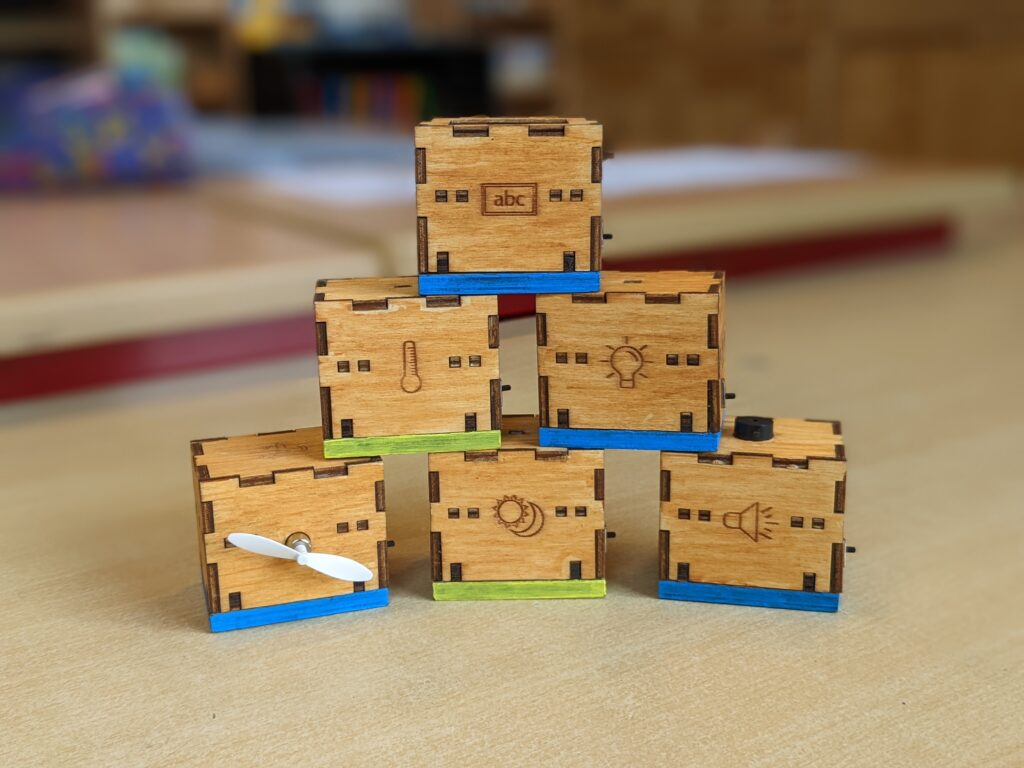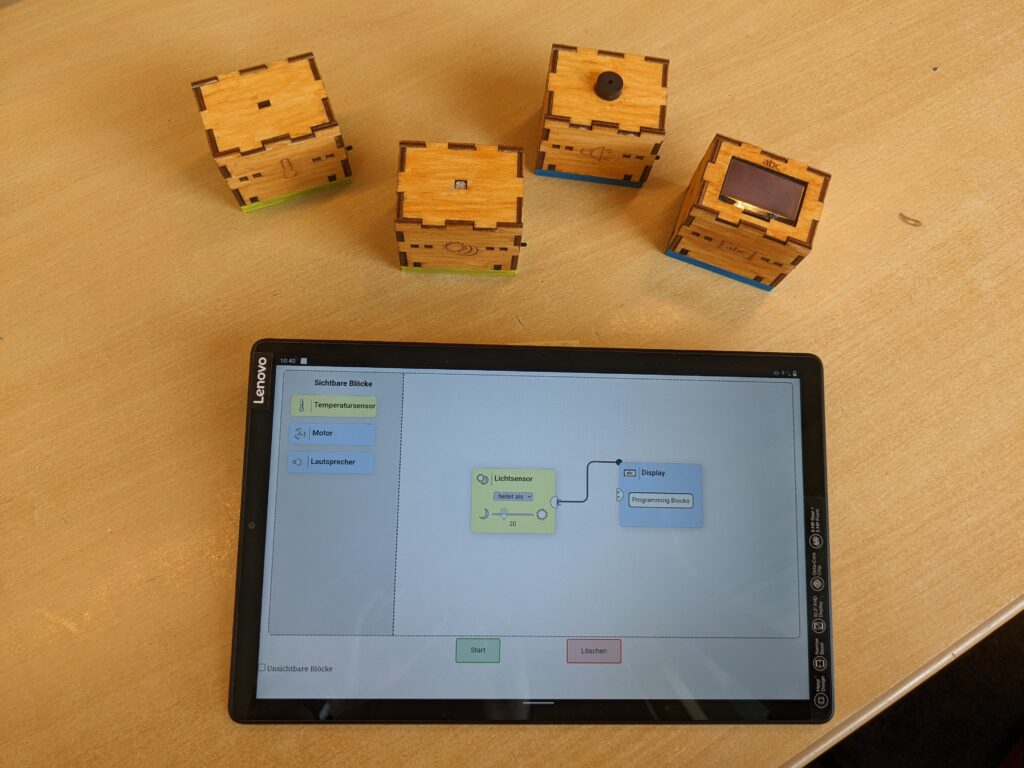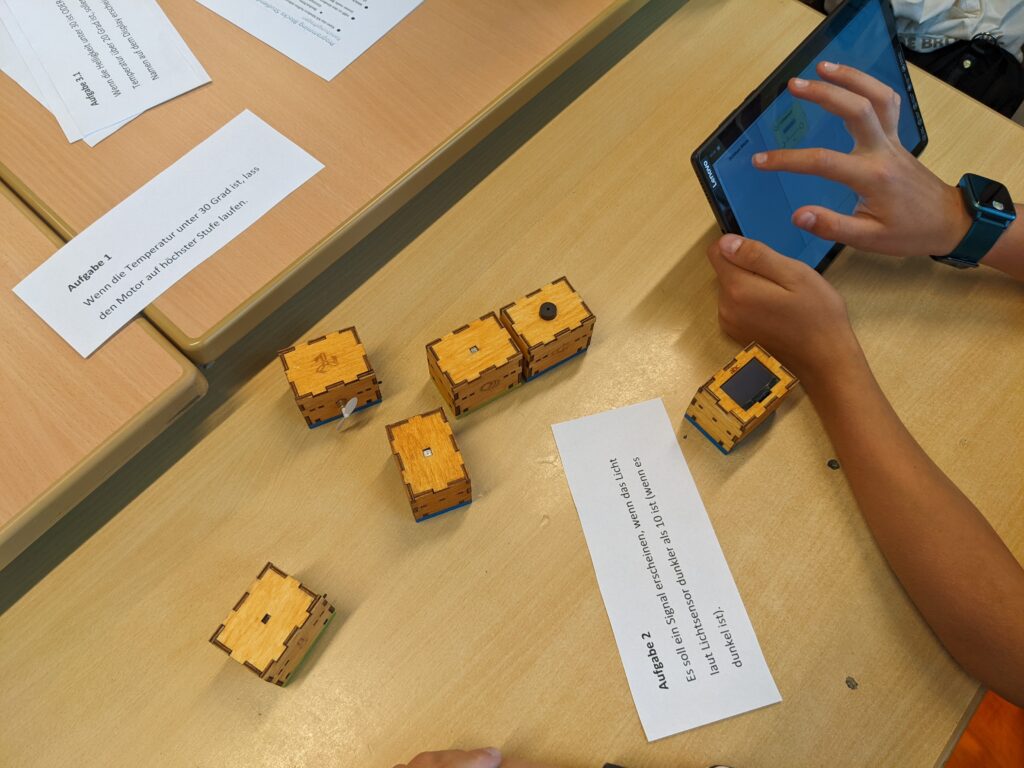IoT programming blocks
This work aimed to create a comprehensive toolkit of wireless sensors and output modules, which can function both independently and in conjunction with one another. This capability is facilitated by a programming environment that includes a real-time interpreter, allowing for seamless connectivity and dynamic updates to the state of the modules.
Computational thinking and the ability to comprehend and program technological systems have become essential components of the curriculum for children and teenagers. Research has demonstrated that programming enhances children’s engagement and motivation.
This work presents a development toolkit for primary school-aged children, which utilizes the Internet of Things (IoT) to assist children in understanding the interconnections between IoT devices, through the use of a graphical user interface (GUI) and connected sensors and actuators. The toolkit aims to empower children to learn the principles of modern IoT technologies, such as communication between sensors and actuators with and without web services.
A qualitative study was conducted to assess the effectiveness of the toolkit in helping children understand the communication between logical operators, web services, and physical sensors and actuators. The study also aimed to investigate the influence of selective exposure on children’s understanding, as well as the strategies children tend to use for debugging. The study involved primary school-aged children completing small programming tasks using the toolkit.


